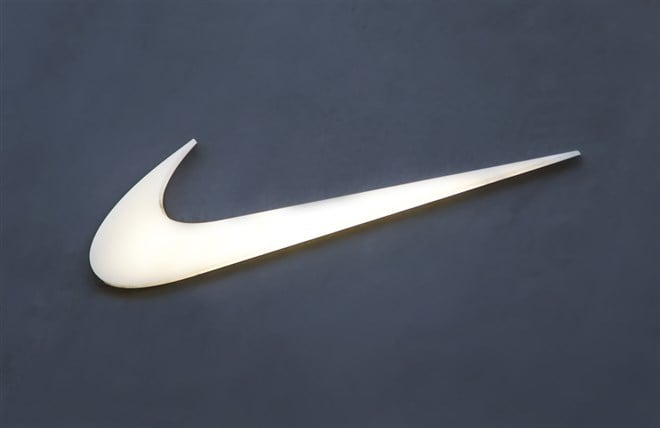- Nike’s laundry list of headwinds starts overseas
- Nike will right the ship; it’ll just take some time
- Nike clearly has pockets of strength in key growth areas

Let’s just say it will be a low hurdle to jump.
The good news is that the worst is probably over for the company.
After a forgettable fiscal 2022 that returned the stock to early pandemic levels, Wall Street is expecting a myriad of challenges to weigh on Nike’s bottom line. The current consensus forecast for Q1 EPS is $0.92, which represents a 21% year-over-year decline. It would mark the third straight quarter of negative earnings growth.
As Nike hits the reset button, investors will be reminded that the global economy is in a precarious state—and that even a rock like Nike is vulnerable.
The good news is that the worst is probably over for the company. By the second half of fiscal 2023, analysts are projecting a return to profit growth.
This means that investors who keep their eyes on the finish line have an opportunity to buy a premium consumer stock at a significant discount.
What’s Wrong With Nike?
Nike’s laundry list of headwinds starts overseas where Covid lockdowns in China have weighed on results. Sales were down 19% in the all-important growth market last quarter with more than half of Nike’s business in the region impacted. Things have since improved on this front, but there could be lingering effects into the new year. Although a small part of business, Nike’s exit from Russia hasn’t helped either.
Back in the North American market, Nike continues to be hurt by supply chain disruptions that have limited its ability to ship products to wholesalers and retailers. To make matters worse, it is paying more to ship goods around the world even though transit times are slower.
Unfavorable foreign exchange rates are also a major headwind. The strength of the U.S. dollar has translated to weaker sales. It will continue to do so with the dollar going up alongside surging Treasury yields.
Product shortages and escalated expenses are a disastrous combination when you’re a global footwear & apparel business—and the main reason Nike will limp into Q1 earnings with its stock trading nearly 50% below last year’s record peak.
What is Nike’s Growth Strategy?
Eventually, Nike will right the ship; it’ll just take some time. And since it is dealing with a host of challenges that don’t go away overnight, it’ll require patience from shareholders for the turnaround to develop.
The key takeaway here is that Nike does not have a demand problem. Even in an inflationary environment, consumers have demonstrated a willingness to buy whatever Nike gear they can get their hands on. Sales growth is expected to have been flat again in Q1 but, considering the inventory issues, this should be viewed as a positive.
As things improve, Nike’s direct-to-consumer push should once again kick in. This is the main pillar of the growth strategy and one that is succeeding despite the tough macro backdrop.
Last quarter, Nike Direct sales jumped 11% on a currency-neutral basis. Results were particularly strong outside of North America, including the EMEA region where Nike Direct sales soared 43%. This is a good sign because it shows the Nike brand is gaining momentum in international growth markets, another important part of the growth plan.
Nike is also building out its digital ecosystem to capitalize on two powerful consumer trends: 1) a shift to online shopping and 2) growing interest in health & wellness. It continues to invest in its websites and portfolio of apps that generate serious traffic from sneaker and fitness enthusiasts. Digital sales increased 18% last quarter aided by a new Jordan rollout and the popularity of the Pegasus running shoes.
Is Nike’s Stock Price Too Cheap?
So Nike clearly has pockets of strength in key growth areas like DTC and digital. This shows that the Nike brand is as strong as ever and, even with price hikes, consumers are willing to shop Nike. The problems lie on the expense side of the ledger. Luckily, these are temporary. In contrast, Nike demand has staying power.
This week’s update from management likely won’t be a pretty one. Consistent with warnings we’ve seen from FedEx and various retailers, Nike could offer a rather gloomy near-term outlook. Supply chain, China, and currencies will be the negative buzzwords.
Fortunately, the longer term picture looks better. Nike has been through these slumps before. It has always come out stronger because it manages to fend off competition and assert the dominance of the Nike swoosh. Don’t expect the stock price to stay in the double digits for long.
Over the last five years, Nike shares have commanded a premium P/E ratio of around 46x. They are presently trading at 26x trailing earnings. It is a discount that is arguably warranted given the pile of near-term risks. But as one by one the risks subside, look for the multiple to stretch back towards the historical average—and Nike to come off the bargain rack.



